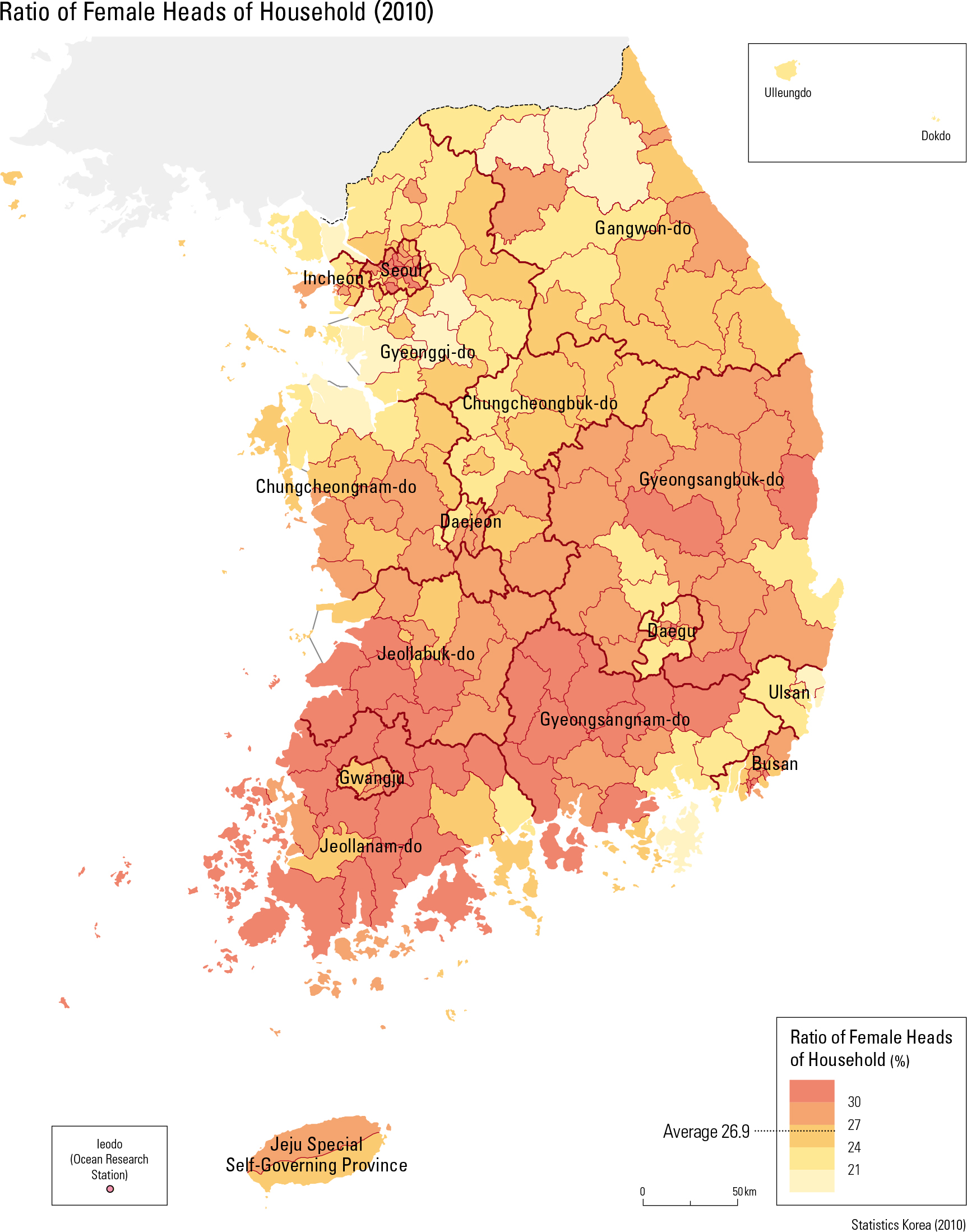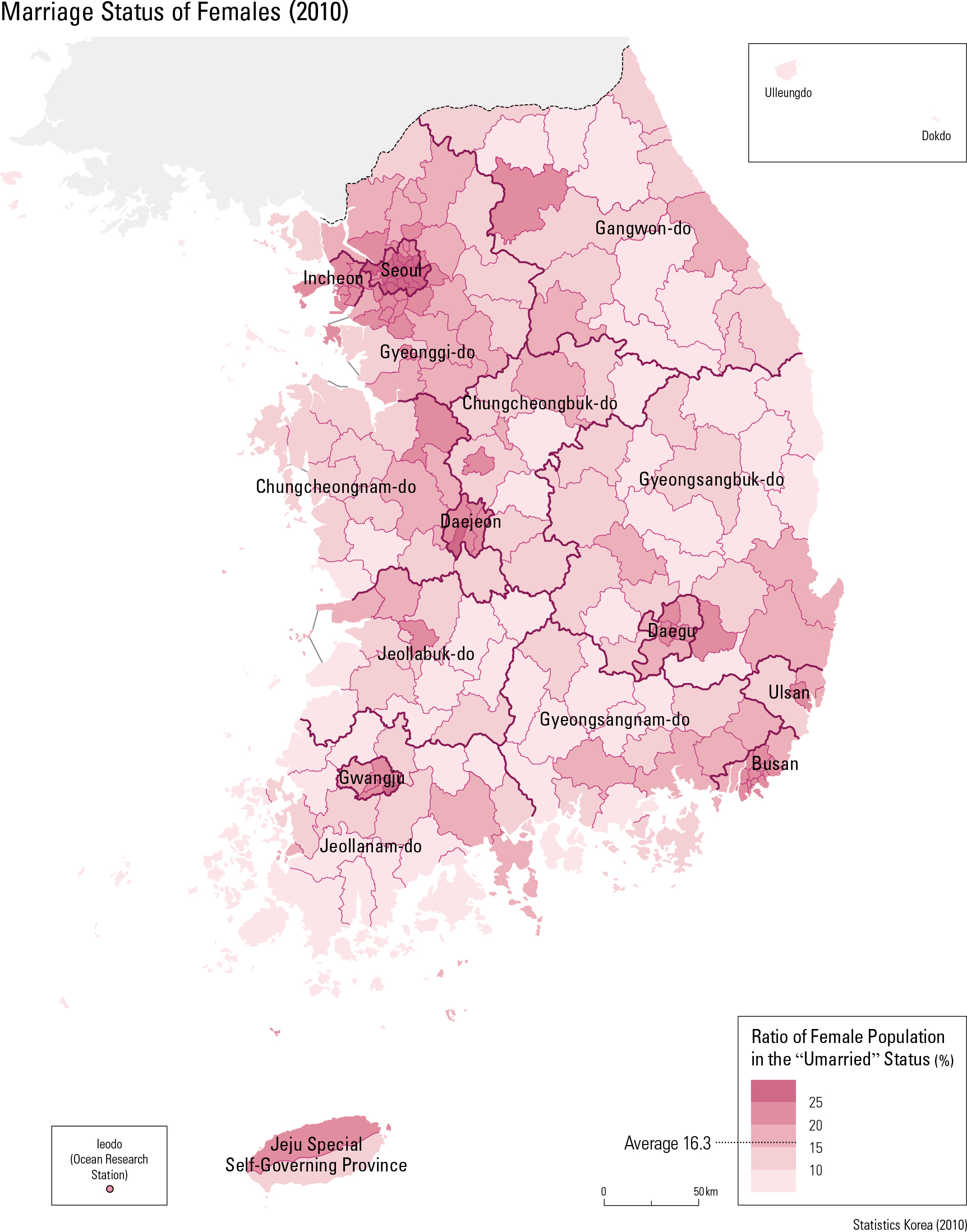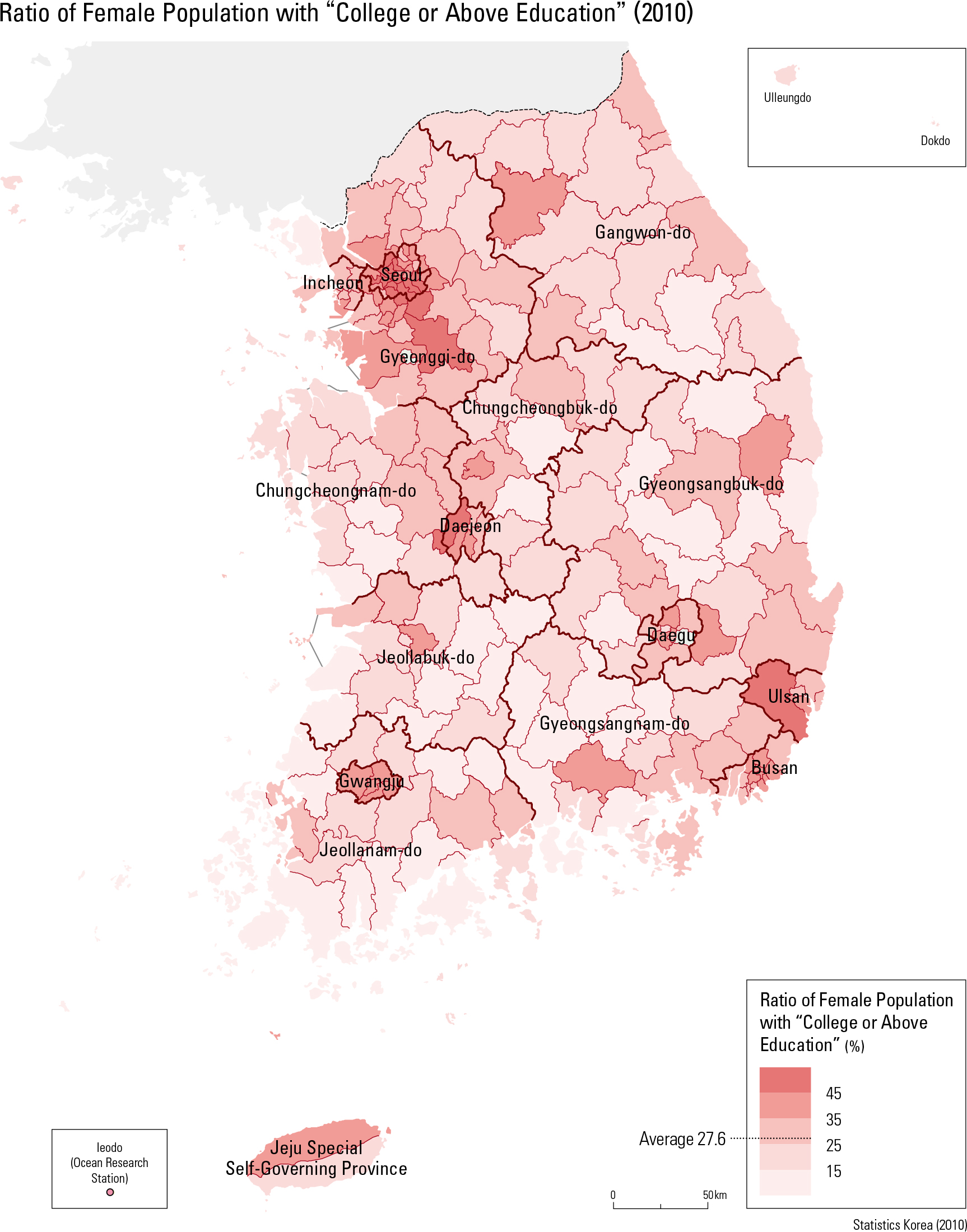English III
In 2010, the female population in Korea was 24.15 million, comprising 50.3% of the total popu- lation. The average ratio of female heads of house- holds is 26.9%. The ratio is high in rural areas. The marriage status of females is another indica- tor that pertains to the lives of women. On average, about 16.3% of the female population is unmarried. The educational level of women is important to their social status. Nationally, the ratio of the fe- male population with university or higher education is 27.6%. The ratio is high in metropolitan areas. The female labor force participation rate is the percent of female population aged 15 and older that are economically active. The percent slightly increased from 48.4% in 1995 to 51.3% in 2014. The Gender Inequality Index (GII), adopted in 2010 by the UNDP (United Nations Development Programme), measures gender inequality in each country. An index closer to zero represents a more equal state. Korea’s GII was 0.31 in 2010 and 0.125 in 2014, indicating that gender inequality is gradu- ally being reduced.
page_2 |




